Nouns/Verbs: The students learned that a noun is a person, place , or thing. And that a verb is an action word or something that you can do.
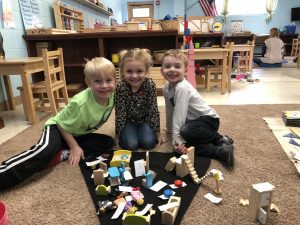

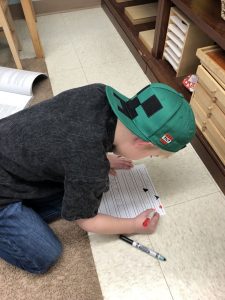
A peak into next week: Articles
Nouns/Verbs: The students learned that a noun is a person, place , or thing. And that a verb is an action word or something that you can do.



A peak into next week: Articles
Water Molecules on the Move: We filled two glasses with the same amount of water: one cold and one hot. Then, we put one drop of food coloring into both glasses at the same time. The students observed that the food coloring traveled quicker through the hot water than the cold water. We discussed how molecules move faster through hot water which is why the food coloring spread faster.

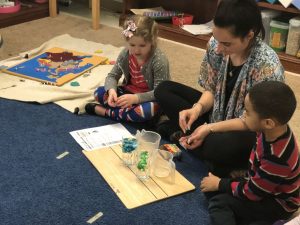
Traveling Water: We taped a piece of string inside one glass then filled it with water. After that we placed the loose string in the empty glass, pouring the full glass of water over the string. When we poured the water it traveled along the string making its way into the empty glass. We talked about how a drop of water has many molecules that are held together by electrical, molecular bonds. We learned that these strong hydrogen bonds found in water are what allowed the water molecules to stick together very well as the water traveled down the string and into the empty glass.
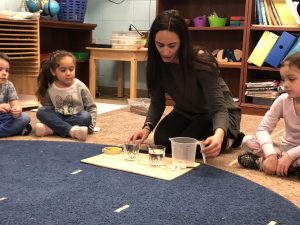
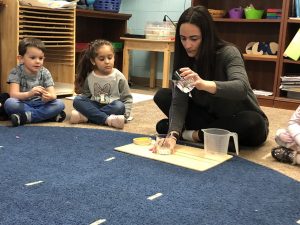
North America: Is the third largest continent in the world. There are four big countries: Canada, Greenland, the United States and Mexico. It has high mountains and flat grasslands. It has swamps, forest, deserts and even volcanoes. Most people speak English, Spanish or French.
South America: Is the fourth largest continent in the world. It has tall mountains and flat grasslands. The worlds largest rain forest is in South American and is called the Amazon rain forest. There are may unusual plants and animals.
Work Time
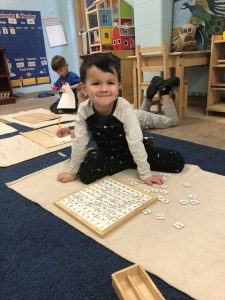

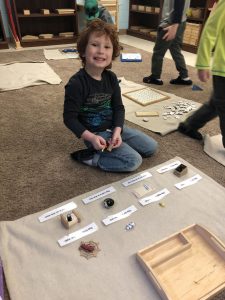
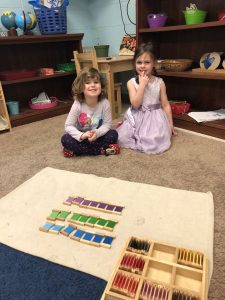
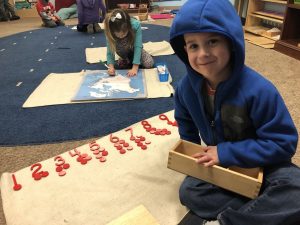
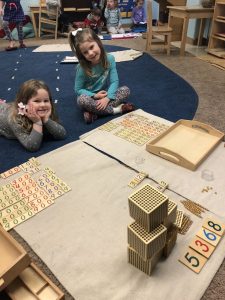
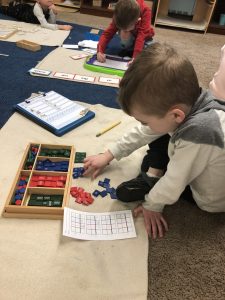
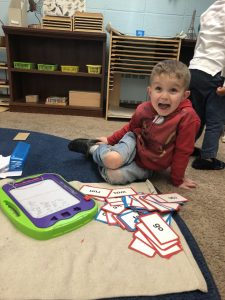
Guest Reader

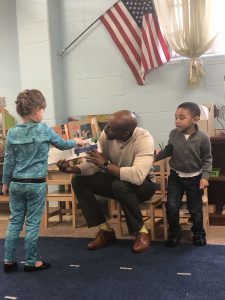
Reminders:
International Festival Rehearsal | April 18th 6pm-7pm
International Festival Show | April 20th 5:30pm-8:30pm
Early Dismisal | April 20th at noon
A peak into next week: Europe and Africa
Vowels and consonants: The students learned to recognize and distinguish vowels from consonants, which is an important step in the development of reading and writing skills. We talked about how all words contain at least one vowel. The students were quickly able to recognize the vowels, which is great because they will have a strong foundation for learning rules and spelling patterns for short and long vowels, final vowels, unaccented vowels, silent vowels and irregular spellings.
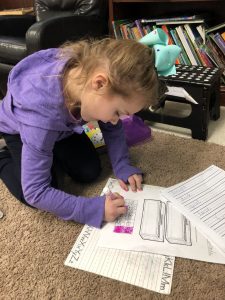
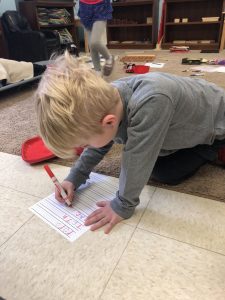
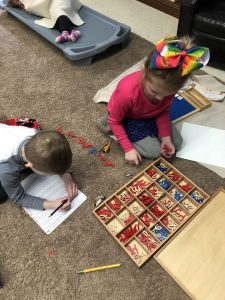
A peak into next week: Nouns and verbs
Construction Boxes: The students used the constructive triangles in these boxes to learn that all plane geometric figures can be constructed from triangles. They worked with two different rectangular boxes, a triangle box, and a large and a small hexagon box. Each box they used contained triangles of different sizes, shapes, and colors. They used the boxes to explore and set a foundation for later concepts such as equivalency, similarity, and congruency.
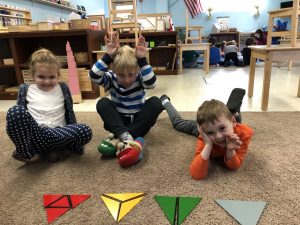

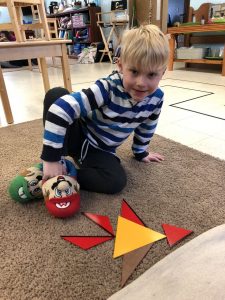
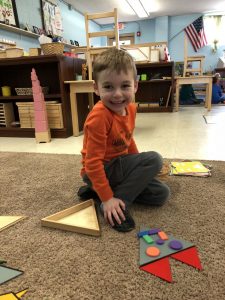
Butterflies and Caterpillars: The students learned that butterflies are insects. They also discovered that a butterfly’s life cycle is made up of four parts, egg, larva (caterpillars), pupa (chrysalis) and adult. We talked about how an adult butterfly will eventually emerge from the chrysalis where it will wait a few hours for its wings to fill with blood and dry, before flying for the first time. The students learned that butterflies often have brightly colored wings with unique patterns (symmetric). We read about how most butterflies feed on nectar from flowers and have taste receptors on their feet.
Work Time
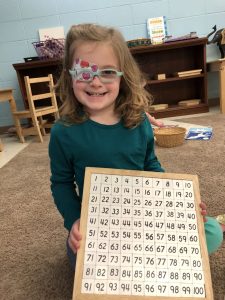
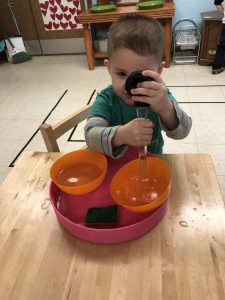
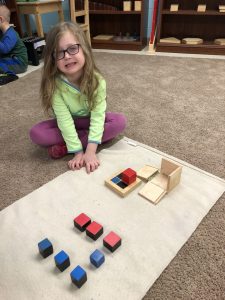
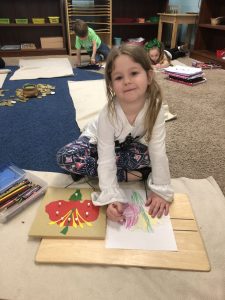
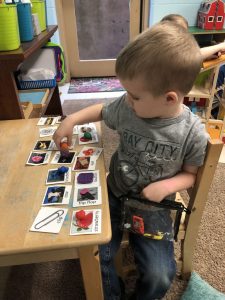
Guest Readers

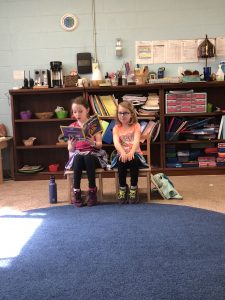
Reminders
March 26 – April 2 | Spring Break
Germination: We talked about how germination is the process of seeds developing into new plants. They learned how certain conditions need to meet in order for this process to take place. We discussed how there needs to be a lot of water so the seed can fill up starting the imbibition process. Which is where the water activates special proteins, called enzymes, that begin the process of the seed growth.
Week 1
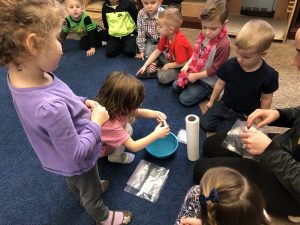
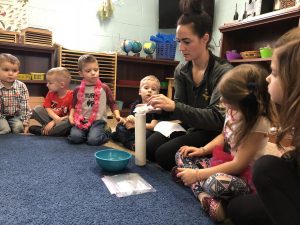
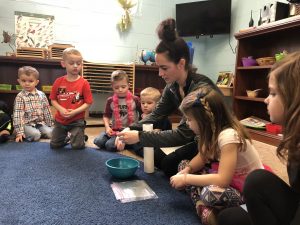
Week 2
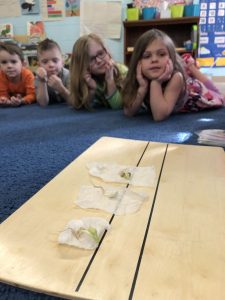
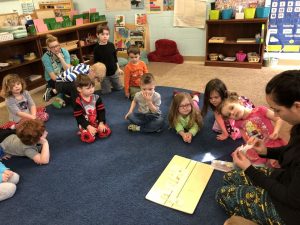
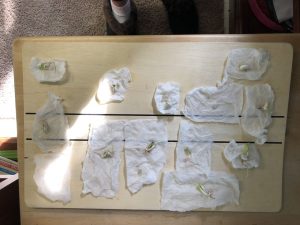
Geometric Solids: The kindergarten students learned the names for all ten of the geometric wooden solids: triangular prism, rectangular prism, cube, cylinder, cone, triangular pyramid, square pyramid, sphere, ellipsoid and ovoid.

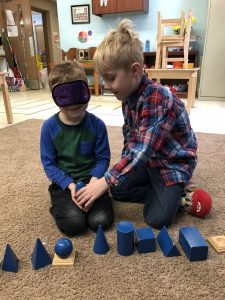
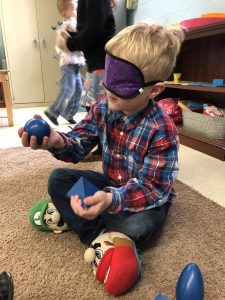
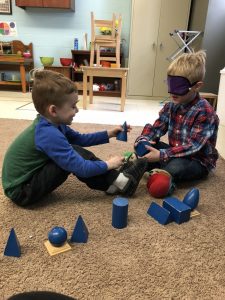
A peak into next week: Construction boxes
Plants and Flowers: We learned how plants grow in many places: parks, forests, yards, fields, deserts, lakes etc. We also discussed how all plants need sunlight, water, air and food to grow. The children learned the different parts of plants and their purposes. For example the stem helps move food and nutrients through the plant or flower in order for it to grow.
Work Time

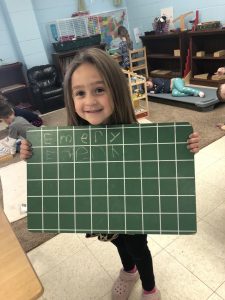
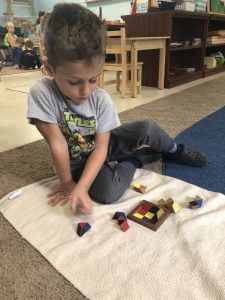
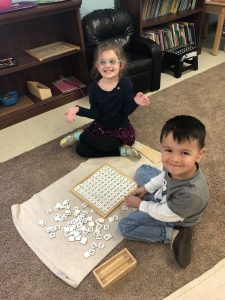

Guest Reader
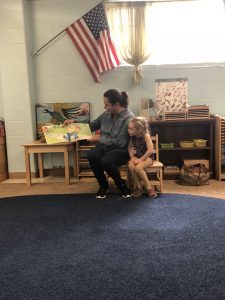
Reminders
March 23 | Pajama and Show N Tell Day
March 23 | Bring Your Parent to Work Time
March 26 – April 2 | Spring Break
A peak into next week: Butterflies and Caterpillars
Insects- The students learned that most insects do more good than bad. That bees, wasps, flies, beetles, mosquitoes and butterflies are great pollinators. Some insects eat other insects, keeping each insect group from getting too big. We also talked about how insects like ladybugs are a farmers best-friend, because they eat tiny crop eating insects called aphids. They also learned that all insects have three main body parts: the head, the thorax, and the abdomen. The head has large compound eyes, the antenna (feelers), and the mouth parts. That the thorax is the middle region of the body and has the legs and wings. Then, their is the abdomen.
Work Time
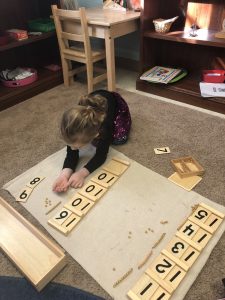
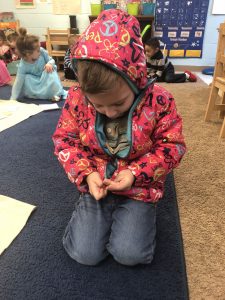
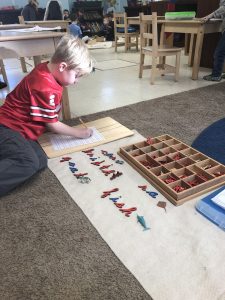
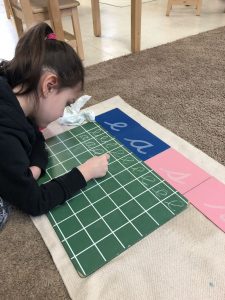
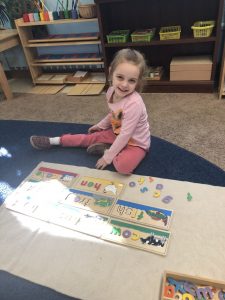
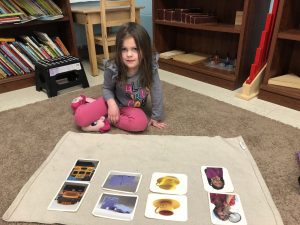
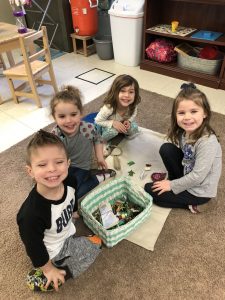
Guest Readers
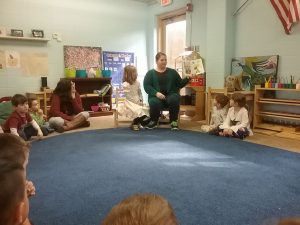
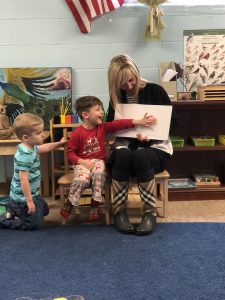
Reminders
March 23 | Pajama and Show N Tell Day
March 23 | Bring Your Parent to Work Time
March 26 – April 2 | Spring Break
A peak into next week: Insects